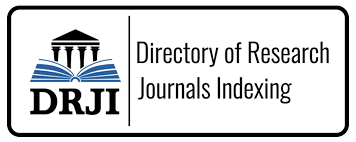Analisis Keterjangkauan Harga, Kesesuaian Harga Dan Daya Saing Harga Terhadap Tingkat Kepuasan Pelanggan Pada Toko Kopel Bulog Divre Sumsel Palembang
DOI:
https://doi.org/10.31851/jmwe.v20i3.13443Abstract
ABSTRAK
Tujuan dalam penelitian ini ialah untuk mengetahui apakah terdapat pengaruh Keterjangkauan Harga, Kesesuaian Harga Dan Daya Saing Harga Terhadap Tingkat Kepuasan Konsumen Pada Toko Kopel Bulog Divre Sumsel Palembang. Penelitian ini menggunakan pendekatan kuantitatif yang bersifat pengaruh atau (regresi) penelitian ini menggunakan sampling jenuh karena semua anggota populasi digunakan sebagai sampel. Hal ini dilakukan bila jumlah populasi relative kecil kurang dari 30 orang. Metode pengumpulan data yang digunakan adalah kuesioner, dokumentasi dan wawancara. Teknik analisis data yang digunakan dalam penelitian ini adalah regresi linier berganda, analisis determinasi, uji hipotesis t dan uji hipotesis f dengan bantuan program SPSS 22 for windows. Hasil penelitian menunjukkan bahwa secara parsial dan simultan ada pengaruh yang signifikan antar Keterjangkauan harga, kesesuaian harga, dan daya saing harga terhadap tingkat kepuasan konsumen toko kopel bulog divre sumsel palembang. Hal itu dapat dilihat dari uji t variabel Keterjangkauan harga yaitu 0,004<0,05 dan variabel kesesuaian harga 0,002<0,05 dan variabel daya saing harga 0,002<0,05 berdasarkan hasil uji F yaitu 0,000<0,05 yang artinya seluruh variabel independen secara bersamaan berpengaruh terhadap variabel dependen.
Kata Kunci: Keterjangkauan Harga, Kesesuaian Harga, Daya Saing Harga, Kepuasan Pelanggan.
ABSTRACT
The purpose of this research is to find out whether there is an influence of price affordability, price suitability and price competitiveness on the level of consumer satisfaction at the Kopel Bulog store, South Sumatra Divre Palembang. This study uses a quantitative approach that is influential or (regressive) this study uses saturated sampling because all members of the population are used as samples. This is done when the population is relatively small, less than 30 people. Data collection methods used are questionnaires, documentation and interviews. The data analysis technique used in this research is multiple linear regression, analysis of determination, hypothesis t test and hypothesis f test with the help of SPSS 22 for windows program. The results of the study show that partially and simultaneously there is a significant influence between price affordability, price suitability, and price competitiveness on the level of consumer satisfaction of the Bulog store, South Sumatra Divre, Palembang. It can be seen from the t-test of the price affordability variable, which is 0.004 <0.05 and the price suitability variable is 0.002 <0.05 and the price competitiveness variable is 0.002 <0.05 based on the results of the F test, which is 0.000 <0.05, which means all independent variables simultaneously affect the dependent variable.
Keywords : Price Affordability, Price Conformity, Price Competitiveness, Customer Satisfaction.
References
Amstrong Dan Kotler. (2012). Manajemen Pemasaran. Jakarta: Erlangga.
Http://Martbulogpalembang.Com (Di Akses 11 Februari 2022).
Keller, dan Philip Kotler. (2015). Manajemen Pemasaran. Edisi 13 Jilid 2. Jakarta : Erlangga.
Kotler,Philip. Manajemen Pemasaran Indonesia. (2011). Jakarta : Selemba Empat.
Porter. (2018). Strategi Bersaing. Bandung : Karisma Publishing Group.
Sugiyono. (2016). Metode Penelitian Kualitatif Dan Kualitatif Rnd. Bandung : Alfabeta.
Sugiyono. (2018). Metode Penelitian Binis. Bandung: Alfabeta.
Tjiptono,Fandy,(2014). Strategi Pemasaran,Edisi 2.Yogyakarta : Andi.
Downloads
Published
Issue
Section
License
Copyright (c) 2023 Jurnal Media Wahana Ekonomika

This work is licensed under a Creative Commons Attribution-NonCommercial 4.0 International License.
The copyright of the received article shall be assigned to the publisher of the journal licensed under a Creative Commons Attribution-NonCommercial 4.0 International License in line with the license, authors and any users (readers and other researchers) are allowed to share and adapt the material only for non-commercial purposes. In addition, the material must be given appropriate credit, provided with a link to the license, and indicated if changes were made. If authors remix, transform or build upon the material, authors must distribute their contributions under the same license as the original.























